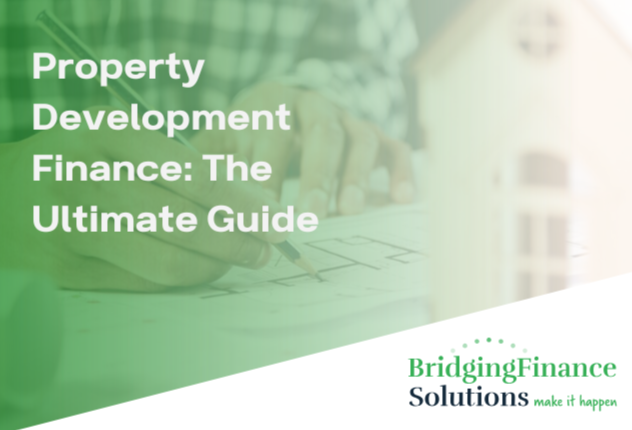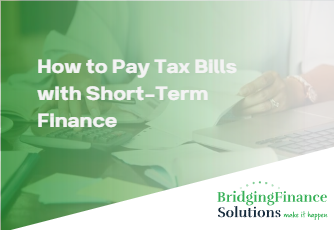Bridging loans are a popular method of short term finance for property investment because they’re flexible and fast, making them ideal for projects with quick turnarounds or sensitive time dependencies.
Though they can be fast, applicants can easily make mistakes, which ultimately means that they don’t receive their loans at the speed they first expected.
At Bridging Finance Solutions, we have delivered the funds to support countless projects, and we are all too aware of the minor mistakes that borrowers make that can have a big impact on their application.
In this guide, we will cover five common mistakes we often encounter when we receive applications and advise you on how to avoid these mistakes and streamline your loan application process.
Why Getting Bridging Finance Right Matters
Whether you’re looking to refurbish an existing property, begin a development, continue work on a current development, or secure a property with an auction bridging loan, a specialist lender requires a fully completed and accurate application form. Cutting corners or withholding information will delay your application.

A minor error could be the difference between securing or losing finance, so it’s important to take care with your application for quick finance.
Mistake #1 – Failing to Plan Your Exit Strategy
The first, and arguably most crucial mistake is failing to plan an exit strategy. Your exit strategy is where you outline exactly how you plan on repaying, be that through the sale of the property, refinancing or a different source of expected finance.
Before any bridging loan provider will consider your eligibility for funding, they need to know that they’ll see a return on their investment. So, before you apply for any bridging loan, it’s essential to have a clear exit strategy in place.
Mistake #2 – Underestimating the Total Cost
Underestimating the total cost of the transaction, in the hopes of improving your odds of acceptance or simply because of careless calculations.
Before you make your application, make sure you break down all of the key costs that you might have for the project, including interest, arrangement fees, legal/valuation costs and even exit fees. Lenders are happy to provide fast bridging loans for even the more costly projects; they just need a complete picture of what they’re funding and why.
Underestimating the cost of your project can lead to issues down the line, leaving you short for your project or unable to meet your outlined exit strategy. It’s advisable to consult with a financial advisor or mortgage broker to ensure you’ve accounted for all potential costs. This is a regulatory requirement for clients applying for a regulated loan.
Mistake #3 – Choosing the Wrong Type of Bridging Loan
Bridging loans are short-term financing options used to ‘bridge’ the gap between a current obligation and the expeditious availability of funds to cover it. They are commonly used in real estate transactions, business financing, or during property developments.
There are primarily two main types of bridging loans:
Closed Bridging Loans:
These loans are provided when the borrower already has a definite plan to repay the loan, such as through the sale of an existing property. The repayment date is known and fixed, making these loans less risky for lenders.
Open Bridging Loans:
Open bridging loans are offered when the repayment date is uncertain, such as waiting for a property sale to finalise. These loans provide greater flexibility but may have higher interest rates due to the increased risk.
Choosing the right type depends on the borrower’s specific situation, repayment timeline, and risk assessment.
At Bridging Finance Solutions, we offer both closed and open bridging loans. We offer loans for a range of projects, including:
- Residential development finance
- Self-build mortgages
- Property conversion finance
- Property refurbishment finance
For more information on our regulated bridging loans or development finance facilities, get in touch with our expert team.
Mistake #4 – Poor Preparation and Missing Documentation
As we have outlined across many of our bridging finance loan FAQs and guides, your first priority before making an application should be ensuring that you have all the necessary documentation prepared.
As the saying goes, ‘failing to prepare is preparing to fail,’ and without the right preparation, your application is very likely to be delayed or declined.
When approaching a lender, you must ensure you have all the necessary documentation ready. This means you need to outline your property details and any valuations you have of the property, as well as proof of exit strategy and verification of your income.

Any incomplete information will only cause delays, meaning that you will have to wait longer to receive the finance you have applied for, which could cause huge disruption to your project.
Having your information together will streamline your application process and show the lender that you are a trusted and easy-to-work-with borrower. Using a bridging loan calculator and obtaining a decision in principle can also help you prepare more effectively.
Mistake #5 – Ignoring Market Conditions and Timing
The housing market is constantly changing, and constantly shifting property values, interest rates, and planning delays can have a huge impact on your loan.
If you are applying for a bridging loan for residential property that you intend to sell as part of your exit strategy, but the sales market is poor, you may find yourself in a difficult situation.
Timing is everything; if you get the timing wrong and ignore market conditions, you might be stuck with a bridging loan and no way to repay what you owe.
To ensure that your loan application is not poorly timed, monitor the market carefully and conduct thorough market research. Speaking to a broker early will give you the advice to time your loan strategically.
How to Avoid These Mistakes
Mistakes can happen, especially if you’re not experienced in property investment or you have never had to apply for a fast bridging loan before. You might naturally rush into your application to secure your loan faster, but taking the time to consider the following tips will make a huge difference.
Work With an Experienced Lender
An experienced lender won’t just communicate through paperwork; they’ll provide crucial guidance throughout the process and ensure that you don’t proceed with your application without a professional property valuation and a full understanding of all costs involved.
At Bridging Finance Solutions, we pride ourselves on taking a hands-on approach to lending. As a bridging loan specialist, we speak to everyone who makes an application with us, ensuring that they are agreeing with a full understanding of their responsibilities and deadlines, whilst also having a solid exit strategy in place.
BFS care about everyone they work with and provide the financial support clients need to avoid rushing into projects and possibly making mistakes with their real estate investments.
Don’t Rush Your Decision

Once you have a project in mind, unless you require something time-contingent, like auction finance, you have the time to really think about a project before you rush into your loan application. Carefully consider your financial circumstances and ensure you meet the lending criteria before applying.
Fund Your Project With Bridging Finance Solutions
Through this guide, we hope to have given you more insight into some of the more common industry mistakes that we have encountered in our time as specialist lenders.
Before you apply for any loan, it is important that you take the time to really understand the scope of your project and have the right paperwork in place.
If you approach your application the correct way, funding can follow quickly. Get in touch with our team to make it happen with BFS today.




